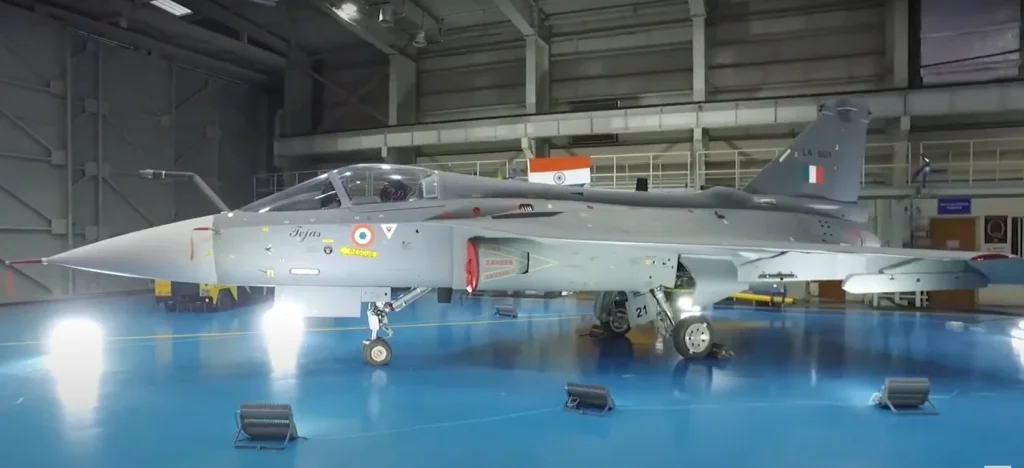Since 2014, Prime Minister Narendra Modi heralded a new era of indigenisation under his Atmanirbharta campaign. However, after almost eight years of running, strong criticisms are rising at home and abroad. Specifically in defence, a push for indigenisation has been claimed to cost lives and national security. Are there any teeth to these allegations?
Seeing Red
Before a strict India-specific deep dive into defence manufacturing, it is best to learn from the Soviet Union. The Soviet Union and Russia have mainly emphasised the state-owned defence industry. Their state-owned defence industry has held contracts from tanks to planes to warheads.
Though they produced formidable fighters like Sukhoi and MiG at a cheaper cost, they remained behind their Western counterparts in innovation. The list of failures has been sizable for the Soviets. Notably, the Caspian Sea Monster, a plane-like naval vessel, tried to innovate the concept of ground effect to develop a fast naval ekranoplan. However, the project culminated with the crash of the only prototype.
Today, the situation is painstakingly similar. While Russia has a formidable next-generation fighter in the Sukhoi 57, its slow production line has resulted in two prototypes that it holds near and dear and, hence, away from the battlefield.
Another impervious government with a large state-owned or influenced defence industry is China. China’s investments in technology, innovation and indigenisation have led to a large inventory of copied equipment which then fueled original advanced machinery. With their resources, they have surely been churning out equipment like anything.
However, there appear to be chinks in their armour. Bangladesh inducted various Chinese defence equipment. The Bangladeshi Navy detected defects in their newly inducted Chinese frigates. Their Air Force has been stuck with the K-8 aircraft, which also has defects. The type 053H3 frigates have reported fire control system and helicopter fueling and refuelling system defects. The short-range air defence system FM-90 faced a component failure due to a power surge.
A friend and a foe both have had similar experiences with the indigenisation push: limited success, slow production, high failure and dubious defences. Is India headed the same way?
Analysing Atmanirbharta
Make in India and Atmanirbharta have been the twin engines for ushering in a new India for the 21st century. However, the Defence Procurement Procedure (DPP) were initially viewed as obstacles more than enablers. The dream started big: 25 per cent of the GDP should be through Make in India.
After initial success for domestic private players like Mahindra, L&T and Tata, the government reworked its approached and streamlined it. With Innovation for Defence Excellence (iDEX), an ecosystem began shaping up to foster growth. Primarily, the Indian way is to strive for technology transfers from foreign OEMs and promote manufacturing in India by foreign OEMs. This strategy has been successful because it has led to various foreign OEMs partnering with Indian counterparts and increasing domestic presence.
With a negative import list, the international media claims India is fighting with a hand-tied. Not only cutting edge equipment out of reach but also the Army and the Navy are also preparing to prolong the life of existing equipment. This forced service beyond sense further endangers lives; lest not forget that India’s Chief of Defence Staff lost his life in a crash.
The industry continues to have a void in producing complex machinery like diesel-electric submarines, jet engines, twin-engine fighters, etc. The Indian Air Force is staring at a major decommission spree. It must rely on providers like Hindustan Aeronautics Limited (HAL) at this important juncture. However, HAL not only produces only single-engine fighters like the Light Combat Aircraft (LCA) Tejas, but it also can produce only 8 in a year. Further, the helicopters the Indian Army and the Air Force depend upon rely on five decades-old French designs. It was reported that more than 80 per cent of choppers had outlived their 30-year lifespan.

The submarines rely on limited torpedoes bought four decades ago. While the Defence Research and Development Organisation (DRDO) continues to work on indigenous torpedoes, the timeline still needs to be determined, as is the urgency.
Indigenisation is not an isolated switch in policy. It is a concerted effort requiring insane investments of money and research time. Imports have circumvented the wait with the associated cost (more like a penalty for not coming up with an indigenous offering), but with negative import lists and a strict indigenous by per cent rules, the move has the potential to hurt the nation.
No military-industrial complex has prospered in isolation. More than domestic orders, the export market kickstarts competitive research and investment. For “atmanirbharta” to taste success, the export market must be explored. Until India starts bagging the exports, the entire exercise is an excuse to keep the technology out of India while making it in India to sell to India only. Atmanirbharta’s policy must differentiate itself from an elaborate rebranding of imports with less sensational and more tactical investments like jet engines, sub-components being imported, etc.
